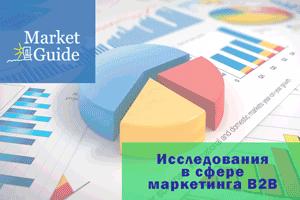Scientific & Practical Journal


Editorial News
Dear readers! We are pleased to present to you the eleventh issue of the journal in 2025. There are a lot of relevant and useful materials in the issue, which, hopefully, will not be ignored.
Dear readers! In September the CeMAT RUSSIA exhibition was held, which showed everyone that innovations and robotics are increasingly penetrating the logistics industry. We can safely say that many technologies are tested here, and only then they go out into the world. However, it is not only CeMAT RUSSIA that demonstrates the prevalence of the digital agenda.
Dear readers! This is the ninth issue of the journal, which turned out to be very rich and diverse. Traditionally, the issue is opened by an analyst. The material by Alina Nasyrova from the Market Guide Agency, dedicated to investments in warehouse complexes in Russia, recalls the importance of developing logistics infrastructure for the integrated development of regions.
PHOTO OF THE WEEK
CITATIONS
Heading:PROBLEMS AND OPINIONS
Expected operating rate and assessment of the impact of dependent components for the period 2025–2034
L.V. Velikaya1 / 2025 | PROBLEMS AND OPINIONS
Annotation. The article calculates the expected financial results of operators for 1 railway car per day for the period 2025–2034, taking into account the application of the forecast operating rate and its ratio to the load on the maintenance of rolling stock. The expenses incurred by a railway car in the form of rental / lease payments and repair costs are investigated.
Key words. Operating rate, price for 1 gondola car, rolling stock maintenance, rental / leasing payments, load on gondola car repairs, rolling stock operator.
Logistics in print: science and practice
Olga Nabatova12 / 2024 | PROBLEMS AND OPINIONS
Problems and prospects of development of logistics of the fishing fleet
P.V. Kurenkov, I.V. Seryapova, K.V. Pisarev12 / 2024 | PROBLEMS AND OPINIONS
Annotation. In the article, the authors consider the issues of the historical formation of the fishing fleet of the USSR, the problems that arose in this area in the 1990s of the last century, as well as the prospects for its development in modern conditions, including the provision of serial shipbuilding and engine building.
Key words. Fishing fleet, port infrastructure, investment quotas, ships, engines, vertically integrated companies.
Expected operating rate and assessment of the impact of dependent components or the period 2024–2034
L.V. Velikaya12 / 2024 | PROBLEMS AND OPINIONS
Annotation. The article examines the relationship between the operating rate of a cargo gondola and the components that affect its change, and assesses the impact of these components on the final value of the indicator. The expected operating rate of a cargo gondola for the period 2024–2034 has been calculated, taking into account the input of forecast data of variable values.
Key words. Operating rate, econometric modeling, price per 1 gondola car, price per ton of thermal coal, number of gondola cars on the railway network of JSC «Russian Railways», rolling stock operator.
An ecosystem approach to defining and developing online commerce
I.V. Sharova12 / 2024 | PROBLEMS AND OPINIONS
Annotation. For a number of political and socio-economic reasons, e-commerce shows multiple growth rates and is one of the leaders in the process of digital transformation of the national economy of the Russian Federation, uniting various market actors into a single ecosystem, contributing to improving the efficiency of its participants in particular and the sustainability of the entire national economy as a whole.
Specific features and current issues of agricultural supply chains: economic aspect
L.F. Melikyan9 / 2024 | PROBLEMS AND OPINIONS
Annotation. The article examines the specifics of agricultural supply chains and identifies the key economic problems faced by their participants in the current situation of geopolitical confrontation and economic sanctions. The most effective and up-to-date principles of building digital ecosystems in agrologistics have been identified, ensuring increased transparency, sustainability and flexibility of supply chains.
Key words. Supply chain management, agriculture, integrated planning, glocalization, cold supply chain, digital agrisupply chain, digital ecosystems in agrologistics.
Realization of the military-economic potential of the new territories of the russian federation in the provision of the armed forces with material and technical means
I.M. Kahramanov9 / 2024 | PROBLEMS AND OPINIONS
Annotation. The article examines scientific approaches to the realization of the military-economic potential of the new territories of the Russian Federation in the context of their integration into the material and technical support system of the Russian Armed Forces. Particular attention is paid to the development of such tools as the localization of military and special equipment production based on local enterprises, infrastructure modernization, optimization of logistics routes, and the creation of repair bases in close proximity to the front line.
Problems of application of agent-based modeling in customs affairs
A.А. Arskiy8 / 2024 | PROBLEMS AND OPINIONS
Annotation. The article presents a set of problems of application of agent-based modeling in customs affairs. The thesis about advantages of agent-based modeling as a forecasting tool in comparison with other tools is substantiated. This statement is reasonably confirmed by scientific publications of foreign and Russian scientists, including publications of the author. The main advantage of agent-based modeling is determined by its adaptability to the dynamics of the external environment.
Application of the multi-agent model concept to obtain the optimal configuration of combined transport
V.N. Belobzhetsky, I.A. Frolov7 / 2024 | PROBLEMS AND OPINIONS
Annotation. In the paper a multi-agent transportation model in considered in the context of multimodal and intermodal transport schemes. The elements and agents of the model are identified and described. The advantages of the multi-agent freight transportation model are shown and observed from a macro perspective of multiple freight operators’ integration. The process of decomposition and detailing of system components is considered.
Key words. Сombined transport, multi-agent models, transport optimization.
Transport and logistics coordination as a tool for increasing the adaptability of the country's economy to emergency situations
V.N. Eskin7 / 2024 | PROBLEMS AND OPINIONS
Annotation. The current turbulent political and economic situation is one of the great challenges facing the country. The logistics coordination system (SLK) is a powerful dual-use organizational and management tool. On the one hand, SLK increases the efficiency of the economy and reduces operational and investment logistics costs, on the other hand, it can improve the safety culture: help in the prevention of emergency risks and upgrade the quality emergency response management.











